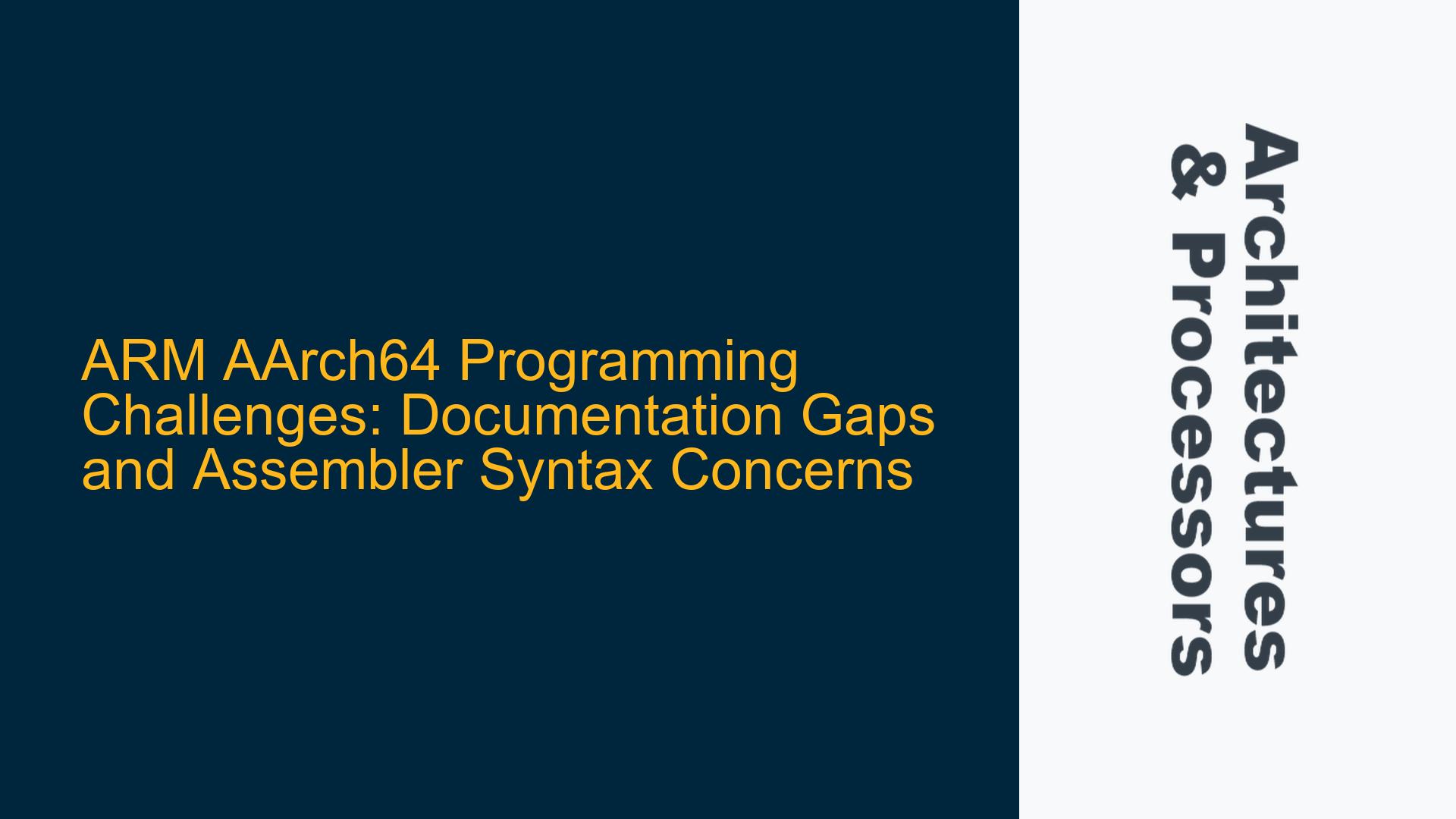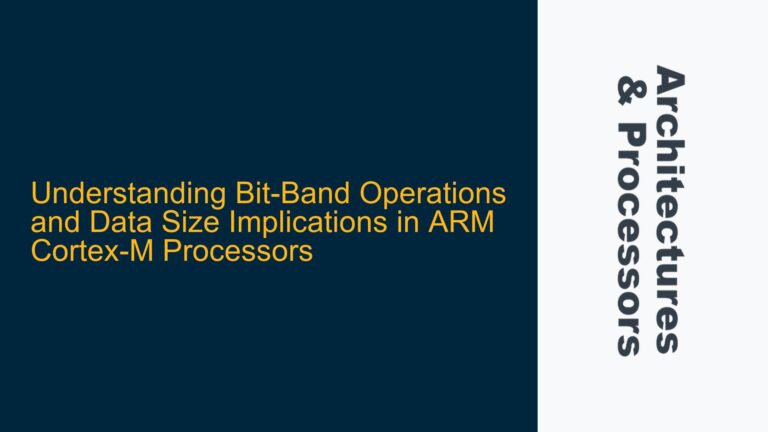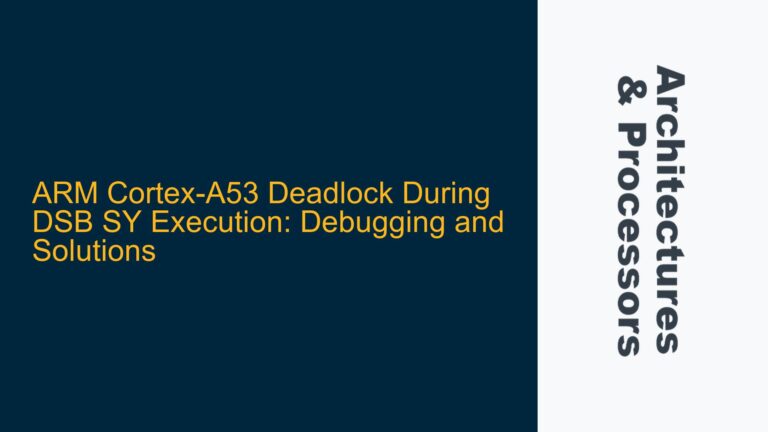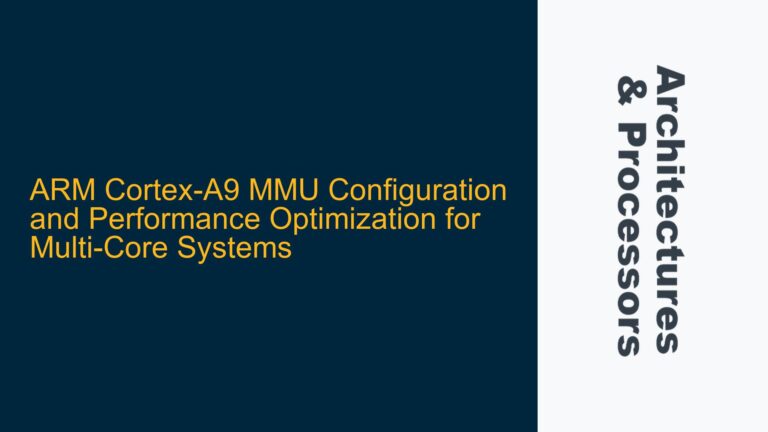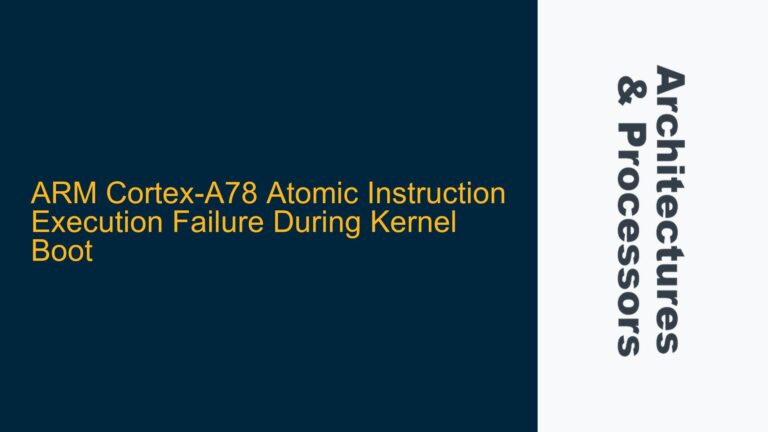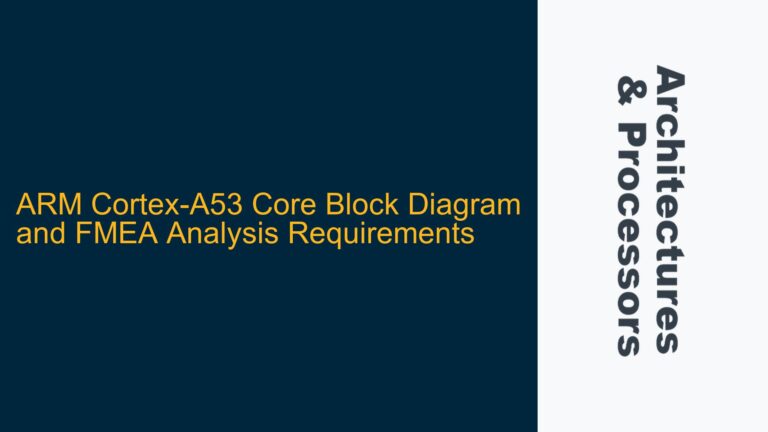Outdated ARM AArch64 Programmer’s Guide and Missing Modern Documentation
The ARM AArch64 architecture, part of the ARMv8-A and ARMv9-A families, is a powerful and widely used 64-bit instruction set architecture (ISA) that powers everything from mobile devices to servers. However, developers working with AArch64 often face challenges due to outdated or incomplete documentation. The primary issue lies in the lack of an updated ARM Programmer’s Guide that comprehensively covers modern features such as Scalable Vector Extension (SVE) and its successor, SVE2. While the ARM Architecture Reference Manual provides detailed technical specifications, it is not designed to serve as a beginner-friendly or practical programming guide. This creates a gap for developers who need clear, up-to-date explanations of how to effectively use AArch64 features in real-world applications.
The current ARM Programmer’s Guide, version 1.0, was written approximately five years ago and does not reflect the latest advancements in the architecture. For instance, it discusses NEON instructions in detail but does not adequately cover SVE, which is a more advanced and scalable vector processing extension. SVE introduces concepts like predicated execution, variable-length vectors, and gather/scatter operations, which are not trivial to understand without proper guidance. Additionally, the guide does not address newer processor implementations or optimizations for modern workloads, leaving developers to piece together information from disparate sources.
This documentation gap is particularly problematic for developers transitioning from other architectures, such as x86_64, who are accustomed to well-maintained and beginner-friendly resources. Without a modern programmer’s guide, developers must rely on the Architecture Reference Manual, which, while thorough, is dense and not optimized for learning or practical implementation. This can lead to inefficiencies, misunderstandings, and suboptimal code, especially when dealing with advanced features like SVE or cache management.
Inconsistent Assembler Syntax and Lack of Intel-Style Assembler Support
Another significant challenge for AArch64 developers is the lack of consistent and widely supported assembler syntax. The ARM ecosystem primarily relies on the GNU Assembler (GAS), which uses the AT&T-style syntax. However, many developers, particularly those coming from an x86_64 background, are more familiar with Intel-style syntax, which is more intuitive for some programmers. The discrepancy in syntax can create a steep learning curve and lead to errors when writing or debugging assembly code.
The issue is further compounded by the fact that the ARM documentation for SVE often uses pseudo-assembler code with Intel-style syntax, even though GAS does not natively support this syntax. This inconsistency between documentation and tooling can confuse developers and make it harder to translate theoretical knowledge into practical code. While GAS is a powerful tool, its syntax can be less readable for those accustomed to Intel-style assembly, particularly when dealing with complex instructions or vector operations.
The lack of a robust, Intel-style assembler for AArch64 is a notable gap in the ecosystem. While NASM (Netwide Assembler) is a popular choice for x86_64 assembly programming, it does not support AArch64, leaving developers with limited options. This forces developers to either adapt to GAS syntax or use alternative tools that may not be as well-supported or feature-complete. The absence of a standardized, widely adopted assembler with Intel-style syntax can hinder productivity and make it harder for developers to leverage the full potential of the AArch64 architecture.
Addressing Documentation Gaps and Assembler Syntax Challenges
To overcome the challenges posed by outdated documentation and inconsistent assembler syntax, developers can take several steps to ensure they have access to the most accurate and up-to-date information while also streamlining their workflow.
Leveraging ARM’s Official Documentation and Community Resources
While the ARM Programmer’s Guide may be outdated, developers should still make use of the ARM Architecture Reference Manual as their primary technical resource. This document provides exhaustive details about the AArch64 ISA, including instruction encodings, register usage, and memory models. For developers working with advanced features like SVE, the manual is indispensable, as it provides the most accurate and detailed information available.
In addition to the Architecture Reference Manual, developers should explore ARM’s official learning resources, such as the “Learn the Architecture” series, which includes guides on A-profile architectures. These resources are regularly updated and provide a more accessible introduction to key concepts. For example, the guide on A-profile architectures covers topics like exception handling, memory management, and vector processing, making it a valuable supplement to the reference manual.
Community forums and discussion threads, such as those on the ARM Developer website, can also be a valuable source of information. Experienced developers often share insights, code snippets, and troubleshooting tips that can help bridge the gap between theory and practice. Engaging with the community can also provide access to unofficial but highly useful resources, such as blog posts, tutorials, and open-source projects that demonstrate best practices for AArch64 programming.
Adopting Alternative Assemblers and Syntax Converters
For developers who prefer Intel-style syntax, there are a few options to consider. While GAS is the most widely used assembler for AArch64, alternative tools like LLVM’s integrated assembler (LLVM-as) offer additional flexibility. LLVM-as supports a more modern and readable syntax, which can be easier to work with for developers accustomed to Intel-style assembly. Additionally, LLVM’s toolchain includes powerful optimization and debugging features that can enhance productivity.
Another approach is to use syntax converters or preprocessors that translate Intel-style assembly into GAS-compatible code. While these tools are not perfect, they can significantly reduce the cognitive load for developers transitioning from x86_64 to AArch64. Some open-source projects and scripts are available that automate this conversion process, allowing developers to write assembly code in their preferred syntax and then generate GAS-compatible output.
For developers who are comfortable with higher-level languages, using intrinsics or inline assembly in C/C++ can be a practical alternative to writing pure assembly code. ARM provides a comprehensive set of intrinsics for SVE and other advanced features, which can simplify vector programming and reduce the need for low-level assembly. Intrinsics also benefit from compiler optimizations, making them a powerful tool for performance-critical applications.
Staying Updated with ARM’s Evolving Ecosystem
Finally, developers should stay informed about updates and new releases from ARM. The architecture is continuously evolving, with new extensions, optimizations, and tools being introduced regularly. Subscribing to ARM’s newsletters, following their official blog, and participating in developer events can help ensure that developers are aware of the latest advancements and resources.
In conclusion, while the challenges of outdated documentation and inconsistent assembler syntax can be frustrating, developers have several strategies at their disposal to overcome these obstacles. By leveraging official documentation, exploring alternative tools, and staying engaged with the ARM community, developers can unlock the full potential of the AArch64 architecture and build high-performance, reliable systems.
